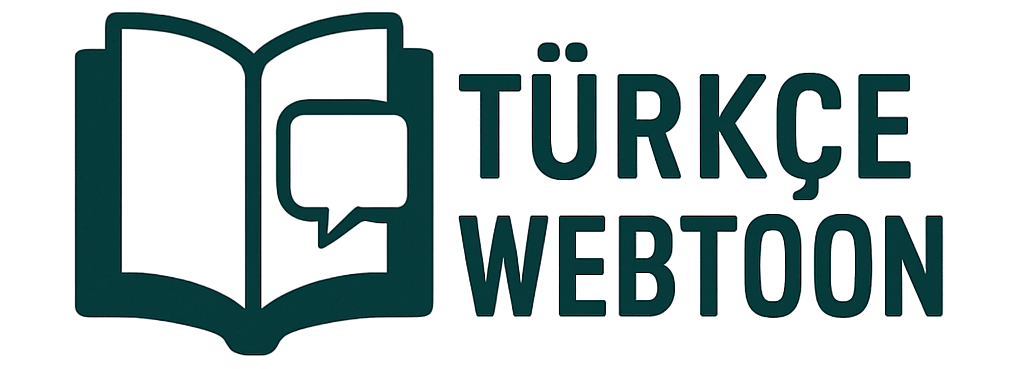Smart Spending, Happy Living: How to Create a Budget Without Feeling Restricted
Ever felt that knot in your stomach when someone mentions the “B” word? Budgeting often gets a bad rap, conjuring images of deprivation, endless spreadsheets, and a life devoid of fun. For many of us – young adults juggling new responsibilities, families stretching every dollar, or low-income earners trying to make ends meet – the idea of a budget can feel less like a helpful tool and more like another burden. “Where do I even start?” “Will I ever be able to enjoy anything?” These are common thoughts that can quickly lead to overwhelm, making us shy away from taking control of our finances.
But what if I told you that simple budgeting doesn’t have to be about cutting everything you love? What if it’s actually about gaining freedom, reducing stress, and finding smart ways to save money while still enjoying life? This article is your friendly guide to crafting a budget that feels less like a straitjacket and more like a comfortable, tailored suit. We’ll explore practical, actionable strategies that empower you, giving you clarity and control over your hard-earned cash. Get ready to transform your financial outlook and discover the joy of mindful spending!

Shifting Your Budgeting Mindset: From Restriction to Empowerment
The first hurdle in creating a budget that works is often mental. We associate budgeting with “no” – no coffee, no outings, no new clothes. But what if we flipped the script? A budget isn’t about telling you what you can’t do; it’s about showing you what you can do, more intentionally and effectively. Think of it as a roadmap to your financial goals, whether that’s building an emergency fund, saving for a dream vacation, or simply reducing financial stress.
Understanding Your “Why”
Before you even look at numbers, take a moment to understand why you want to budget. Is it to save money for a down payment? To finally get out of debt? Or just to feel more in control of your daily spending? Your “why” is your North Star. For example, Ayşe, a young professional, felt overwhelmed by her inconsistent spending. Once she identified her “why” – to save for a master’s degree – she found herself naturally more motivated to track her expenses and prioritize her spending, making simple budgeting feel less like a chore and more like a pathway to her future. Write down your “why” and keep it somewhere visible; it’ll be a powerful motivator!
Embracing “Conscious Spending”
Instead of “budgeting,” let’s talk about “conscious spending.” This means being aware of where your money goes and making deliberate choices, rather than letting it slip through your fingers without a second thought. It’s about aligning your spending with your values. Do you value experiences over material possessions? Then allocate more to travel and less to impulse buys. This isn’t about deprivation; it’s about making choices that genuinely make you happy and support your long-term goals.
The Foundation: Knowing Where Your Money Goes
You can’t steer a ship if you don’t know where it’s currently headed. The same goes for your money. Understanding your current income and expenses is the bedrock of any successful budget. This step might seem daunting, but it’s simpler than you think and incredibly illuminating.
Tracking Your Income: The Starting Line
First things first: clearly define your total monthly income. Include your salary, any freelance earnings, or other regular sources of money. Be realistic and only include income you can reliably count on each month. If your income fluctuates, consider using an average of the past few months or basing your budget on your lowest expected income to be on the safe side.
Unearthing Your Spending Habits: The Detective Work
This is where the magic (and sometimes the shock!) happens. For a month, track every single dollar you spend. Yes, every coffee, every bus ticket, every grocery run. There are many simple budgeting methods for this:
- Pen and Paper: A small notebook dedicated to your spending. Simple, effective, and no tech required.
- Budgeting Apps: Apps like Mint, YNAB (You Need A Budget), or your bank’s spending trackers often have helpful features. They can categorize your expenses automatically, making the process almost effortless.
- Spreadsheets: If you love numbers, a simple spreadsheet can be your best friend.
Mark, a student trying to save money for a new laptop, meticulously tracked his spending for a month. He was genuinely surprised to find how much he was spending on daily snacks and drinks. This realization wasn’t about guilt; it was about gaining insight and empowering him to make smarter choices without feeling restricted.
Building Your Budget: Practical Strategies That Don’t Pinch
Once you know your income and expenses, it’s time to build your budget. Remember, this isn’t about cutting everything; it’s about allocating your money in a way that serves your goals and your lifestyle.
The 50/30/20 Rule: A Simple Starting Point
This popular rule is an excellent framework for simple budgeting and helps you categorize your spending without getting bogged down in tiny details:
- 50% for Needs: This includes essential expenses like rent/mortgage, utilities, groceries, transportation, and debt minimums. These are the things you absolutely must pay for to live and function.
- 30% for Wants: This is your fun money! Dining out, entertainment, hobbies, shopping for non-essentials, subscriptions – these are the things that bring joy to your life but aren’t strictly necessary.
- 20% for Savings & Debt Repayment: This portion goes towards building your emergency fund, retirement savings, investing, or paying down high-interest debt beyond the minimums.
Let’s say your monthly after-tax income is $4,000. According to the 50/30/20 rule, you’d aim to spend $2,000 on needs, $1,200 on wants, and allocate $800 to savings and debt. This rule provides a flexible structure that allows for personal preferences within each category.
The Envelope System: Tangible Control
For those who prefer a more tactile approach, or who struggle with overspending in specific categories, the envelope system is a fantastic, time-tested method. Label envelopes for cash-based categories like “Groceries,” “Entertainment,” and “Dining Out.” At the beginning of the month, put the allocated cash into each envelope. Once the money in an envelope is gone, it’s gone until the next month. This physical limitation can be incredibly effective in preventing impulse purchases and makes you truly conscious of every expenditure.
Zero-Based Budgeting: Giving Every Dollar a Job
Zero-based budgeting is a bit more detailed but incredibly empowering. The idea is that every single dollar of your income is assigned a “job” – whether it’s going towards a bill, savings, or a “want.” When you subtract all your expenses and savings from your income, you should be left with zero. This doesn’t mean your bank account is empty; it means every dollar has a purpose. This approach ensures you’re intentional with every penny, making it a powerful tool for financial planning and reaching specific goals quickly.
Keeping Your Budget Flexible and Fun
A rigid budget is a broken budget. Life happens! Unexpected expenses pop up, opportunities arise, and sometimes, you just need a treat. The key to successful budgeting is building in flexibility and ensuring it supports your happiness, not hinders it.
The “Buffer” or “Fun Money” Category
Don’t forget to allocate a small buffer or “fun money” category. This is money you can spend guilt-free on whatever brings you joy – a spontaneous coffee with a friend, a new book, or a small indulgence. Having this buffer prevents you from feeling deprived and makes your budget sustainable in the long run. Sarah, a young mother, struggled with sticking to her budget until she added a “Mom’s Me-Time” fund. This small allocation, used for a massage or a quiet coffee, made her feel valued and prevented her from abandoning her entire budget when she felt overwhelmed.
Regular Check-Ins, Not Rigid Rules
Your budget isn’t set in stone. Life changes, and so should your financial plan. Schedule a monthly or bi-weekly “money date” with yourself (or your partner) to review your spending, adjust categories as needed, and celebrate your progress. Did you overspend on dining out last month? No judgment, just adjust your plan for the next. Did you crush your savings goal? High five yourself! These regular check-ins keep you engaged and allow your budget to evolve with your life.
Conquering Common Budgeting Pitfalls
Even with the best intentions, bumps can occur on your budgeting journey. Anticipating these and having strategies to overcome them will make your path much smoother.
Dealing with Irregular Income
If your income fluctuates, creating a budget can feel like playing whack-a-mole. The trick is to budget based on your lowest expected income, and then categorize any extra income as “bonus.” This bonus money can then go directly to savings, debt repayment, or a special treat. This strategy ensures your basic needs are always covered, providing peace of mind.
Overcoming the “Guilt Trip”
You overspent. It happens! Instead of spiraling into guilt, view it as a learning opportunity. Identify why you overspent. Was it an unexpected expense? An impulse buy due to stress? Understanding the root cause helps you adjust your strategy for the future. Remember, budgeting is a journey, not a destination. Every misstep is a chance to learn and refine.

Conclusion: Your Journey to Financial Freedom Begins Now
Phew! We’ve covered a lot, but hopefully, you’re now feeling less daunted and more empowered by the idea of creating a budget. Remember, simple budgeting isn’t about restriction; it’s about intention. It’s about knowing where your money goes so you can direct it towards what truly matters to you. From the empathetic understanding of your “why” to the practical application of the 50/30/20 rule, you now have a toolbox full of actionable strategies designed to make your financial life easier and more efficient.
Don’t aim for perfection; aim for progress. Start small. Perhaps just track your spending for a week, or try the 50/30/20 rule for one month. The cumulative effect of these small, consistent changes will amaze you. It’s time to take control, reduce that financial stress, and unlock a life where your money works for you, not against you. Go on, pick one strategy from this article and implement it today. Your future self will thank you!
Frequently Asked Questions (FAQ)
What is the simplest way to start a budget?
The simplest way to start a budget is by tracking your income and expenses for a month. Once you know where your money is going, you can use a basic framework like the 50/30/20 rule to allocate your funds for needs, wants, and savings.
How can I save money without feeling deprived?
Focus on “conscious spending” and aligning your spending with your values. Allocate a “fun money” category in your budget, even a small amount, to avoid feeling deprived. Look for creative ways to enjoy yourself that are less expensive, like cooking at home or enjoying free local events.
What are quick ways to improve my financial planning?
Start by setting clear financial goals. Automate your savings by setting up automatic transfers to a separate savings account each payday. Regularly review your spending to identify areas where you can cut back without feeling restricted.
Is budgeting only for people with financial problems?
Absolutely not! Budgeting is a powerful tool for everyone to gain control, reduce stress, and achieve their financial goals, whether it’s buying a house, retiring early, or simply having more peace of mind about their money.

